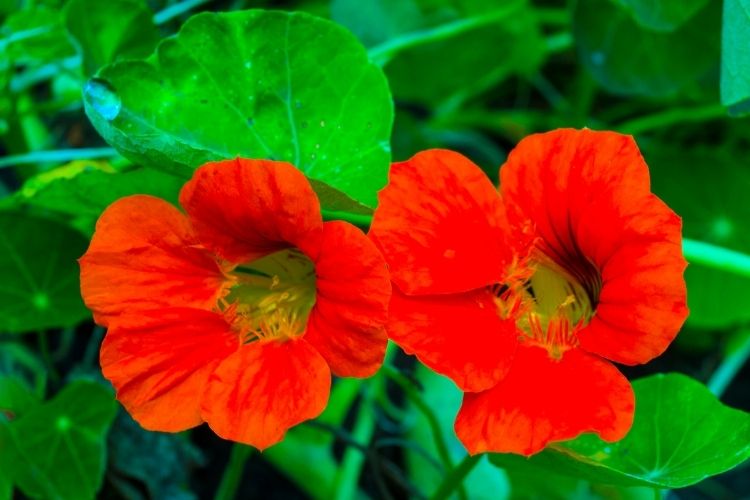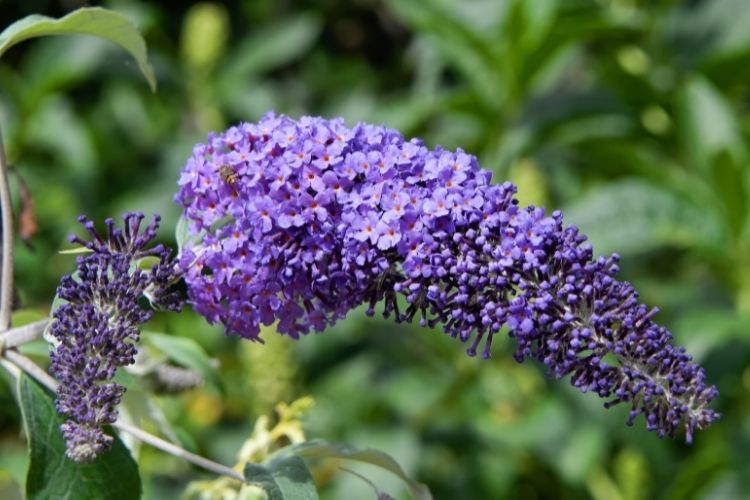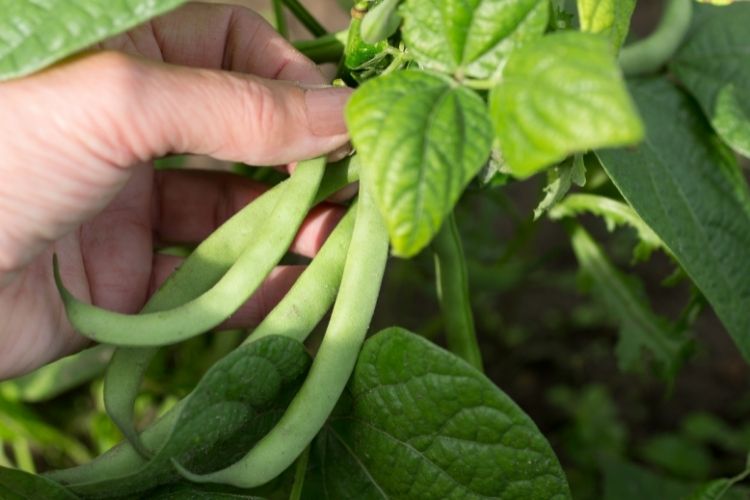- Best Blueberry Companion Plants That You Should Totally Plant Together - August 13, 2021
- Chandler Strawberry Growing Guide: How to DIY? - August 8, 2021
- Albion Strawberry Growing Guide: How to Enjoy This Fruit All Summer - July 5, 2021
Begin with the end in mind – companion plantings are based on clear and direct objectives. Each plant you introduce to your blueberry patch must have a purpose. Some companion plants help with space management; others encourage pollination, some repel insects, while others stave off disease.
Below are some common motivations for introducing companion plants to a blueberry patch. Take a look at the objective below to see what is helpful for your garden. In addition, below are some details about the easiest companion plants to grow.
Why Consider Companion Plantings
Many plants do better when they have some helpful plant companions. Plant companions help to reduce or even eliminate pests, attract beneficial insects, and improve soil quality. Blueberries are a cherished home garden fruit, but the bushes take long to mature and do not provide big crops until a few years. A typical highbush variety will not reach peak production until the fifth year.
While waiting on your blueberry patch to mature, you can take some time to nourish the soil and protect the plants from pests with the strategic usage of companion plants. Furthermore, once fruit production begins, some companion plants facilitate better fruiting.
To Repel Harmful Insects
One of the main reasons for companion plantings is to repel harmful insects. The type of insect that affects your blueberry patch varies based on your region. Generally, some insects enjoy feasting on the leaves, flower buds, and stems of blueberry bushes.
Some pesky insects include – aphids, blueberry tip borer, scale, gypsy moth, blueberry gall midge, blueberry stem gall wasp, sharp-nosed leafhopper, and white marked tussock moth. There are some organic means to control these insects, such as neem oil and special soaps. But, companion plantings are perhaps the most aesthetically pleasing methods for controlling these insects.
Many companion plants do a great job of repelling these insects from your blueberry bushes. Some include marigolds, nasturtiums, catnip, basil, thyme, rosemary, marjoram, and rue. Below is some background information on marigolds and nasturtiums – they are relatively easy to find flowering plants.
Marigolds

Marigolds are cheerful and easy to grow annually. They can provide your blueberry patch with an abundance of color during the frost-free season. The peak season for marigolds is during the summer months, as they enjoy basking in the heat. Generally, marigolds are easy to grow and fast-growing.
They give far more than what they take – offering beautiful flowers and repelling insects. Marigolds are also suitable for attracting butterflies and other beneficial insects, which help with cross-pollination.
- Botanical Name: Tagetes spp.
- Plant Type: Flowering annual
- Plant Size: Most marigold varieties range from 6 to 12 inches tall to 6 to 9 inches wide.
- How to Plant: Plant from seeds or young plants.
- Sun Exposure: Marigolds prefer full sun but will also tolerate partial sun.
- Soil Type: Marigolds do well in loamy and sandy soils.
- Bloom Time: Expect blooms from spring through fall. The warmer the climate, the longer the growing season, and vice versa.
- Flower Color(s): These plants come in various colors – multicolor, orange, red, white, yellow.
- Hardiness Zones: Marigolds are annuals; your plant will only survive one growing season. They do fine in USDA hardiness zones 3 to 11.
- Special Feature: Marigolds attract butterflies, and the intense aroma of the plant repels harmful insects. Also, they are simply attractive with their puffy heads.
Nasturtiums

Nasturtiums are easy to grow and fast-growing. They have beautiful edible flowers and round leaves with a spicy and pungent taste. The oils, which are the source of the flavor of the plant, repel insects.
- Botanical Name: Tropaeolum majus, T. minus
- Plant Type: Flowering annual, herb
- Plant Size: Nasturtiums grow 6 to 12 inches in height and 1 to 3 feet in width.
- How to Plant: Plant from seed; nasturtiums should flower in a couple of months after planting.
- Sun Exposure: Nasturtiums prefer full sun; however, the partial sun is better in areas with scorching summers as they are sensitive to heat.
- Soil Type: These plants prefer sandy soils.
- Bloom Time: Nasturtiums bloom during the summer and fall months.
- Flower Color(s): Red, Orange, White, Yellow
- Hardiness Zones: Plants are hardy in USDA zones 10 and 11. In colder zones, the plants will die back upon the first frost.
- Special Feature: Nasturtiums are great at attracting butterflies. But they are also excellent repellents for aphids, a common bug affecting blueberry patches—edible leaves and flowers which are great in salads.
Thyme

Thyme is a remarkable herb because it has multiple uses. Its pungent and spicy flavor is great in meat and fish marinades. Thyme does wonders to the taste of grilled meats.
Beyond its culinary uses, it makes a decent groundcover and insect repellent. Consider planting time near your blueberry plants; most insects dislike the pungent aroma of this herb. So, consider planting thyme; they will benefit both your cooking and the health of your blueberry bushes.
- Botanical Name: Thymus vulgaris
- Plant Type: Herb
- Plant Size: Thyme can grow up to 12 inches tall. It grows wider than tall – 18 inches.
- How to Plant: Thyme seeds are difficult to germinate and may take some time to mature. It is better to buy young plants in a garden center. Alternatively, you can quickly grow thyme from rooting cuttings.
- Sun Exposure: Thyme thrives in full sun.
- Soil Type: Thyme prefers loamy or sandy soils that drain well. Being native to the Mediterranean area, the plant is relatively drought tolerant.
- Hardiness Zones: Thyme is hardy from USDA zones 5 to 9.
- Special Feature: A powerful culinary herb with a pleasant and pungent clover flavor. As a companion plant in your blueberry patch, the smell will deter many harmful insects.
To Attract Beneficial Insects
Cross-pollination happens when the pollen from one blueberry variety fertilizes the ova of a different blueberry variety. This process is needed for the fruit to form in the ova. Several blueberries require cross-pollination to bear fruit. Examples include ‘ Brightwell,’ ‘Tifblue,’ ‘Misty,’ ‘Sharpblue,’ ‘Chippewa,’ ‘St. Cloud’ and ‘Powder Blue’ blueberry.
To help your blueberry patch reach its maximum production capacity, it helps to encourage cross-pollination by any means possible. Some insects like bees and ladybugs make efficient pollinators. Companion plants such as borage are great at attracting these useful insects.
Borage

Borage is a relatively easy and fast-growing annual herb with vivid blue flowers which have the flavor and scent of cucumbers. Borage’s lovely greenish-grey stems and leaves are covered in a prickly fuzz.
While the fuzz repels some insects, the flowers are a goldmine for bees. These helpful bees are what you need to assist those blueberry bushes which require cross-pollination.
- Botanical Name: Borago officinalis
- Plant Type: Hardy flowering annual, herb
- Plant Size: Borage grows 1 to 3 feet tall and 6 to 18 inches wide.
- How to Plant: Plant from seed or young plants found in your local garden center or online.
- Sun Exposure: Borage strives in a sunny spot but will also tolerate partial shade.
- Soil Type: Borage does fine in most soils – even the poorest. But they strive best in a rich, moisture-retentive.
- Bloom Time: Borage blooms during the summer months.
- Flower Color(s): Blue
- Hardiness Zones: Plants are hardy from USDA zones 2 to 11. They are a relatively hardy annual, as they tolerate a bit of cold but will not survive a hard frost. Likewise, they are also tolerant of heat.
- Special Feature: Borage’s dainty blue flowers are very attractive to the bees, excellent pollinators.
Butterfly Bush

True to its name, butterfly bush attracts butterflies to the garden. Butterflies provide tremendous assistance in the cross-pollination of blueberry plants.
Butterfly bush has lovely and fragrant purple, lavender, pink or white blooms. Unlike flowering annuals, this woody shrub can live for decades. Such means it will be a long-term companion to your blueberry bushes as they are also long-living shrubs.
- Botanical Name: Buddleia davidii
- Plant Type: Shrub
- Plant Size: Butterfly bush can reach 8 to 10 feet, with a similar width.
- How to Plant: You can grow butterfly bush from cuttings or purchase young plants online or in your local garden center.
- Sun Exposure: Give your butterfly bush full sun to ensure good quality flowering.
- Soil Type: Butterfly bush is not fussy about type soil ensure that well-drained.
- Bloom Time: Butterfly bush blooms for many months – from summer through fall.
- Flower Color(s): Pink, Purple, Red, White, Yellow
- Hardiness Zones: Plants are hardy from USDA zones 5 to 10.
- Special Feature: Butterfly bushes attract butterflies which are useful pollinators for blueberry varieties requiring cross-pollination.
To Improve Soil Nutrient Profile
As plants grow, they take up valuable nutrients from the soil. Considering that your blueberry bushes will require some years to reach maturity, you need a long-term soil maintenance strategy.
Such is where introducing companion plants such as bush beans and pole beans come in handy. Beans help put nitrogen back into the soil – ensuring that your blueberry plants are healthy and well-fed.
Green Beans

Green beans are an easy-to-grow vegetable garden staple. Even if you don’t have much space, green beans won’t be bothered. They are incredibly productive in any area provided.
There are two types of green beans – bush and pole. Bush beans grow compactly, reaching about two feet tall, and do not require extra support from a structure such as a trellis. Pole beans form vigorous climbing vines reaching 10 to 15 feet tall. They do require a trellis or staking. If you are concerned about space or want your blueberry bushes to breathe – bush beans are the better choice.
- Botanical Name: Phaseolus vulgaris
- Plant Type: Vegetable
- How to Plant: Plant by seed outdoors after last spring frost. The soil must be warmer than 48º F.
- Sun Exposure: Green beans need full sun.
- Soil Type: Green beans strive in clay and loamy soils. They prefer the soil to be slightly acidic to neutral. This is great as blueberries require slightly acidic soils to strive.
- Bloom Time: Green beans bloom throughout the summer months.
- Flower Color(s): White and yellow are typical flower colors.
- Hardiness Zones: Green beans are tender annuals that do well from USDA zones 3 to 10. But you mustn’t plant green bean seeds until the danger of frost is gone; they are not cold hardy.
- Special Feature: Green beans put nitrogen in the soil. For blueberry growers, they offer dual benefits – green beans and more nutritious soil.
FAQs
Answer: The best companion plant is the one that fulfills the ongoing needs of your blueberry patch. For example, if harmful insects are the primary concern, then plants such as marigolds and herbs are the best for the situation. If insufficient nitrogen levels in the soil are the problem, then planting beans is the best choice for your garden.
Answer: Some blueberry varieties need cross-pollination (‘Brightwell,’ ‘Tifblue,’ ‘Misty,’ ‘Sharpblue,’ ‘Chippewa,’ ‘St. Cloud’ and ‘Powder Blue’).
Others do not have this need and are self-pollinating. Though companion plants will encourage better cross-pollination, they are not necessary. Nevertheless, it does not hurt to give your blueberry bushes a healthy nudge to cross-pollinate.
Answer: Annuals such as nasturtiums, borage, and marigolds need to be replanted each year. They do not survive frost and freeze. But, others such as butterfly bushes are faithful long-term companions and will be alongside your blueberry bushes for decades.
Answer: All of the plants detailed in this article are relatively easy to grow. For example, borage and butterfly bushes are not too fussy about soil quality. Also, thyme is pretty drought tolerant. Take a look at the plants featured above in this article.
Final Thoughts
In general, there are three reasons to consider companion plants: repelling harmful insects, attracting beneficial insects, and improving the soil profile.
Plants with oils give off a powerful aroma; these are usually herbs and marigolds. For attracting beneficial insects, consider placing a few borage or butterfly bushes next to your blueberry patches. Beans are a classic choice for improving soil quality, with their nitrogen-fixing nature.
The benefit of planting beans and herbs as companions is that they will benefit your blueberry bushes and supply your kitchen with flavor. You do not have much to lose, so give it a try if you have the space for companion plants.

